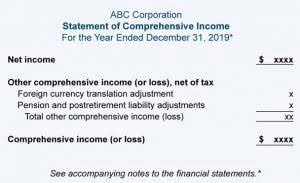Blue collar worker definition: What is it and where does it come from?
Additionally, the gig economy is expected to influence blue collar work significantly. More workers are opting for freelance or contract work, allowing them to have greater flexibility and control over their schedules. This trend is particularly evident in sectors like transportation and delivery services, where platforms like Uber and DoorDash have created new opportunities for blue collar workers.
Manufacturing and Production
- For instance, a skilled mechanic may transition into a management role within an automotive company, overseeing operations and logistics.
- Diving into this profession typically requires a high school diploma or GED.
- For instance, entry-level white-collar roles like software engineers can earn around $130,000, according to the BLS.
- Within white-collar professions, there is often a strong emphasis on specialization.
- A typical day for a hairdresser involves interacting with clients, understanding their hair needs, and offering suggestions based on current trends or what would best suit the client.
- A typical day might include checking their vehicle, planning their route, driving for several hours, and loading or unloading goods.
Indeed has a great article explaining why some feel it’s politically incorrect to label jobs as “blue collar” or “white collar,” along with the history of the terms. Unlike white collar roles focused on administration or intellectual tasks, blue collar positions emphasize operational execution. While traditionally linked with uniforms like work boots and overalls, the term goes beyond attire.
Emerging Trends in Blue Collar Industries
These roles keep industries running—think of electricians wiring homes, truck drivers transporting goods, or factory workers assembling products. While blue collar work presents its own set of challenges, it also offers numerous opportunities for growth and advancement. As the economy continues to evolve, the importance of skilled blue collar workers will remain a vital component of the workforce, ensuring that these roles are not only essential but also rewarding. The job market for blue collar workers has seen significant fluctuations over the past few decades, influenced by technological advancements, globalization, and shifts in consumer demand. White-collar jobs are primarily characterized by their office-based nature, focusing on professional and administrative tasks rather than manual labor.
The term yellow collar job describes all the roles in creative, artistic, or media-based industries. These professionals work in design, entertainment, marketing, and content creation, blending creativity with technical skills. On the other hand, many blue-collar jobs may require vocational training or apprenticeships but generally have lower educational requirements. Plus, if you enjoy learning by doing and prefer gaining practical experience on the job, a blue-collar job could be a better fit. Many trades and skilled labor jobs value experience over formal education and provide excellent opportunities for career advancement.
White-collar workers often spend their days in office settings, which can range from cubicles to open-plan spaces. These environments are designed to facilitate collaboration and communication among employees. In the healthcare industry, white-collar roles include healthcare blue collar job meaning administration, medical billing, and health information management. These professionals work behind the scenes to ensure that healthcare facilities operate efficiently, manage patient records, and comply with regulations.
Educational Requirements
While there aren’t strict educational requirements, it’s beneficial to have training in navigation, marine safety, and fishing techniques. Many fishermen learn the ropes by starting as deckhands on larger vessels and gradually gaining experience. An electrical engineer’s days involve drawing designs, testing prototypes, or collaborating with other engineers and professionals.
Unlike white collar workers, who often have structured contracts in office settings, many blue collar jobs require union representation to negotiate benefits and rights effectively. Despite their crucial role in the economy, bluecollar workers face several challenges that impact job security, working conditions, and career growth. Unlike white collar workers, who operate in stable office settings, those in blue collar jobs often deal with unpredictable workloads, safety risks, and wage disparities.
Blue-Collar Jobs at Risk
For example, the United Brotherhood of Carpenters and Joiners of America has successfully negotiated contracts that ensure fair wages and benefits for its members in the construction industry. In addition to base salaries, many blue collar jobs offer benefits such as health insurance, retirement plans, and paid time off, which can enhance overall compensation. However, it is important to note that wage disparities exist within blue collar work, often influenced by factors such as union representation, geographic location, and the specific industry.
As the job market continues to evolve, embracing the opportunities within blue collar fields can lead to rewarding and stable careers. Blue collar jobs are often characterized by their physical nature, requiring workers to engage in manual labor and operate machinery. This can lead to a variety of physical demands that can be both challenging and rewarding. Many blue collar roles, such as construction workers, electricians, and factory workers, involve lifting heavy objects, standing for long periods, and performing repetitive tasks.
What is a blue collar worker?
Blue-collar jobs are typically more physically demanding than white-collar jobs. Workers may be required to lift heavy objects, stand for long periods, or perform repetitive motions. This physicality can lead to a higher risk of injury, making it crucial for blue-collar workers to adhere to safety protocols and use proper equipment. Employers often provide training on safe practices to minimize workplace accidents and injuries. Factory workers are involved in the production of goods, often working on assembly lines or operating machinery.
Carpenters construct, install, and repair structures made of wood and other materials. They work on a variety of projects, from building frameworks for houses to crafting furniture. Carpenters must be skilled in reading blueprints and using various tools, such as saws, hammers, and drills. Many carpenters learn their trade through apprenticeships or vocational training programs, which provide hands-on experience and technical knowledge. The blue collar became a symbol of pride for many workers who contributed to the growth of the economy through their labor-intensive jobs. Many people call for more blue-collar workers to be skilled in training, utilizing, and guiding artificial intelligence in their jobs.
Their main job is to ensure the safety of the crew, the ship, and its cargo. They navigate through open waters, handle emergencies onboard, and ensure the ship sticks to its schedule. A rigger’s day can involve a lot of planning because lifting heavy things can be dangerous if not done right. They might be reading blueprints, calculating weights, and ensuring all equipment is in top shape.
Alternatively, advancements in a white collar job often involve further education, such as obtaining advanced degrees, certifications, or attending professional development courses. Networking, mentorship, and demonstrating strong performance in current roles are other key factors that help advance their career. Globalization has significantly reshaped the landscape of blue collar work, creating both challenges and opportunities for workers in various sectors. As companies expand their operations internationally, they often seek to reduce costs by outsourcing labor to countries with lower wage standards.
- The concept of blue collar work has been a part of the workforce for over a century.
- Unlike white collar jobs, which are often tied to an office environment, these roles are more hands-on, demanding physical effort and expertise.
- Diving schools offer courses in commercial diving, where you learn about safety protocols, underwater welding, rigging, and more.
- Aircraft Mechanics (sometimes called Aircraft Maintenance Technicians) play a pivotal role in the aviation industry.
- This often means passing an exam on pest control procedures and pesticide use.
These roles often value practical experience and specific skill sets over academic qualifications. Blue collar workers focus more on physical abilities and practical skills than formal academic education. These roles can include many professions, such as electricians, mechanics, plumbers, factory workers, and many others. Additionally, the construction industry is witnessing a resurgence, driven by urbanization and infrastructure development. Roles such as construction managers, skilled laborers, and safety inspectors are in high demand as cities expand and require new buildings, roads, and public transportation systems.
At the time, most manual workers, especially in industry, wore blue denim or chambray shirts. Efforts should be made to recognize and value the skills and expertise of these workers. Moreover, employers can implement career development programs that offer training and mentorship to help these workers acquire new skills and progress within their respective fields. Many industries adhere to a promotion system primarily based on seniority rather than skills or performance. This leads to a lack of recognition of the capabilities of newer or more skilled workers.
Is Blue-Collar a Derogatory Term?
They’re often up with the sun, ensuring their crops and livestock are healthy and thriving. Farmers play a crucial role in getting food to our tables, from gigantic wheat fields to smaller organic vegetable patches. Generally, you’d start with a high school diploma or equivalent, and many installers learn their craft on the job. Depending on the type of flooring and where you’re working, certifications might be available that can boost your expertise and job prospects.






















